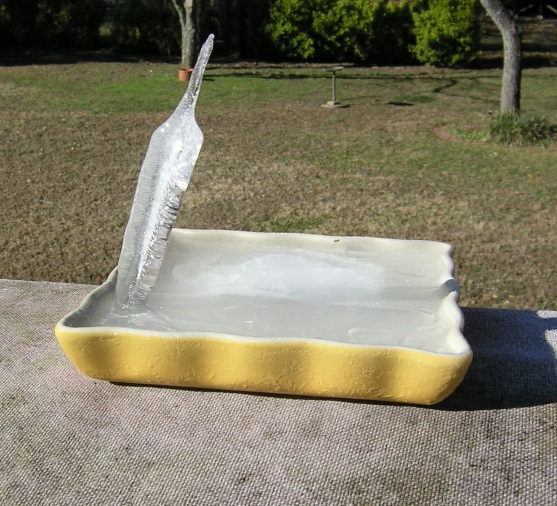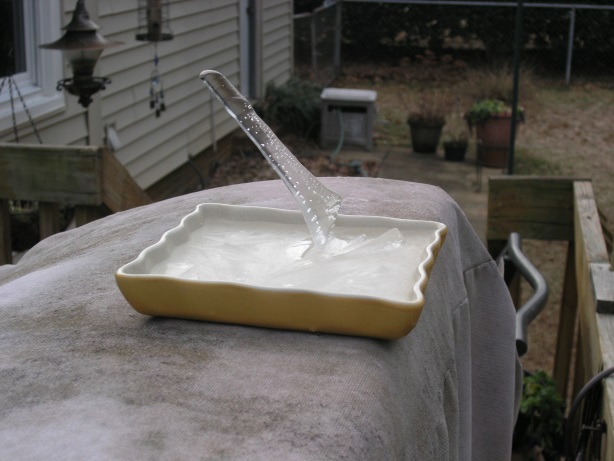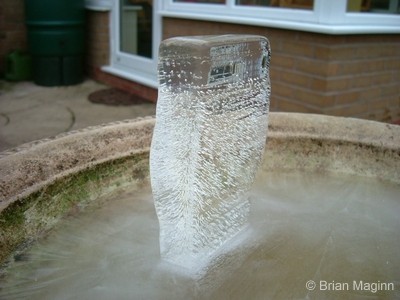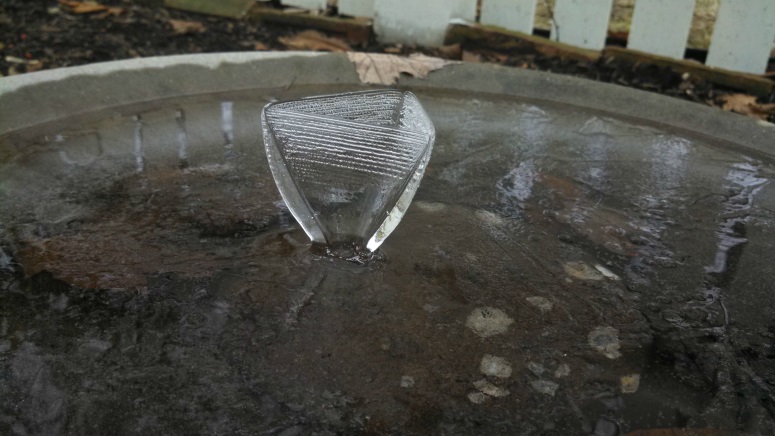When it gets as cold as it has been lately (even here in Alabama), I like to find ways to take advantage of it. When I lived in the Upper Peninsula of Michigan 40 years ago, it was card games, beer, and snowmobiles (too often in that order).
Back in November in Alabama it was frost flowers. Today, it’s ice spikes.
Ice spikes form in bird baths and other rigid water containers when a layer of ice on the water thickens, expands, and forces water underneath to spurt up through a small hole that forms naturally in the ice. Some people have found them on their refrigerator ice cubes, although they tend to form more readily with distilled water than with tap water.
I tried my hand at making them two nights ago with the intent of getting better time lapse photography than I have found so far. I got two or three small ones to grow (video at the end of this post). But it was already 15 deg F when I started, and then 5 deg. F by morning, while a more optimum temperature is supposed to be about 20 deg. F.
Ice spikes have even been studied scientifically, at CalTech in Pasadena (yup, the Big Bang Theory nerds at it again). Their experiments were mostly in ice cube trays in a freezer.
But the more spectacular spikes I’ve found on the web have grown in large, shallow containers, mostly bird baths (the first pair below is, coincidently, from here in Huntsville 4 years ago, and the person grew them 2 nights in a row):
Note in rare cases an inverted pyramid of ice forms.
From reading some of what has been written on the physics of their formation, I think a missing ingredient is a heat source from below. Virtually all of the examples on the web have no snow on the ground, and the container almost always has a way of being kept warm from beneath. The water under the thickening ice must stay warm enough to feed the ice tube that forms, without the tube freezing shut. So, most of the instances of large ice spikes reported are from regions where the ground stays relatively warm. For example, cave temperatures here in Huntsville run around 60 deg. F, so the ground here remains quite warm through the winter.
Last night I tried again with a large tray like those found under large plant pots, sitting on a thick slab of Styrofoam, and used a three-probe quality digital thermometer to monitor temperatures. Without a heat source below, the water at the bottom of the 18” diameter shallow plastic tray rapidly approached 32 deg. F, and the surface of the water formed a uniformly thick sheet of ice. No spikes.
So, exactly how a small hole forms and is maintained as most of the ice thickens and the spike grows remains a mystery to me, although I suspect a weak heat source at the bottom is key to growing large spikes.
The small ones I grew with distilled water are on the right side of the dark bowl in the time lapse video, below. (The large bowl to the right losing water is made of bamboo…I thought it looked cool when I bought it, but it leaks). I placed a chemical-type hand warmer under each bowl:

 Home/Blog
Home/Blog







